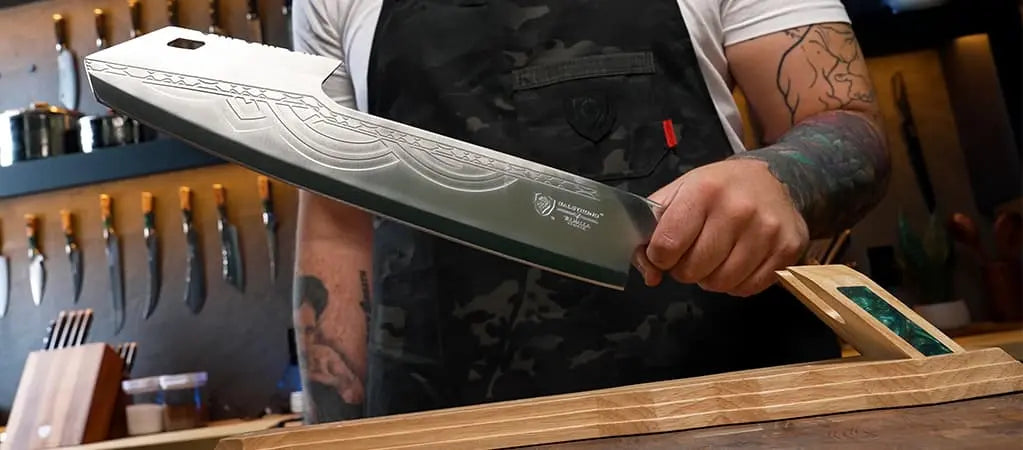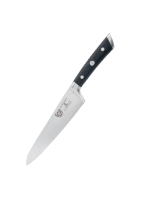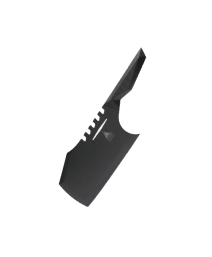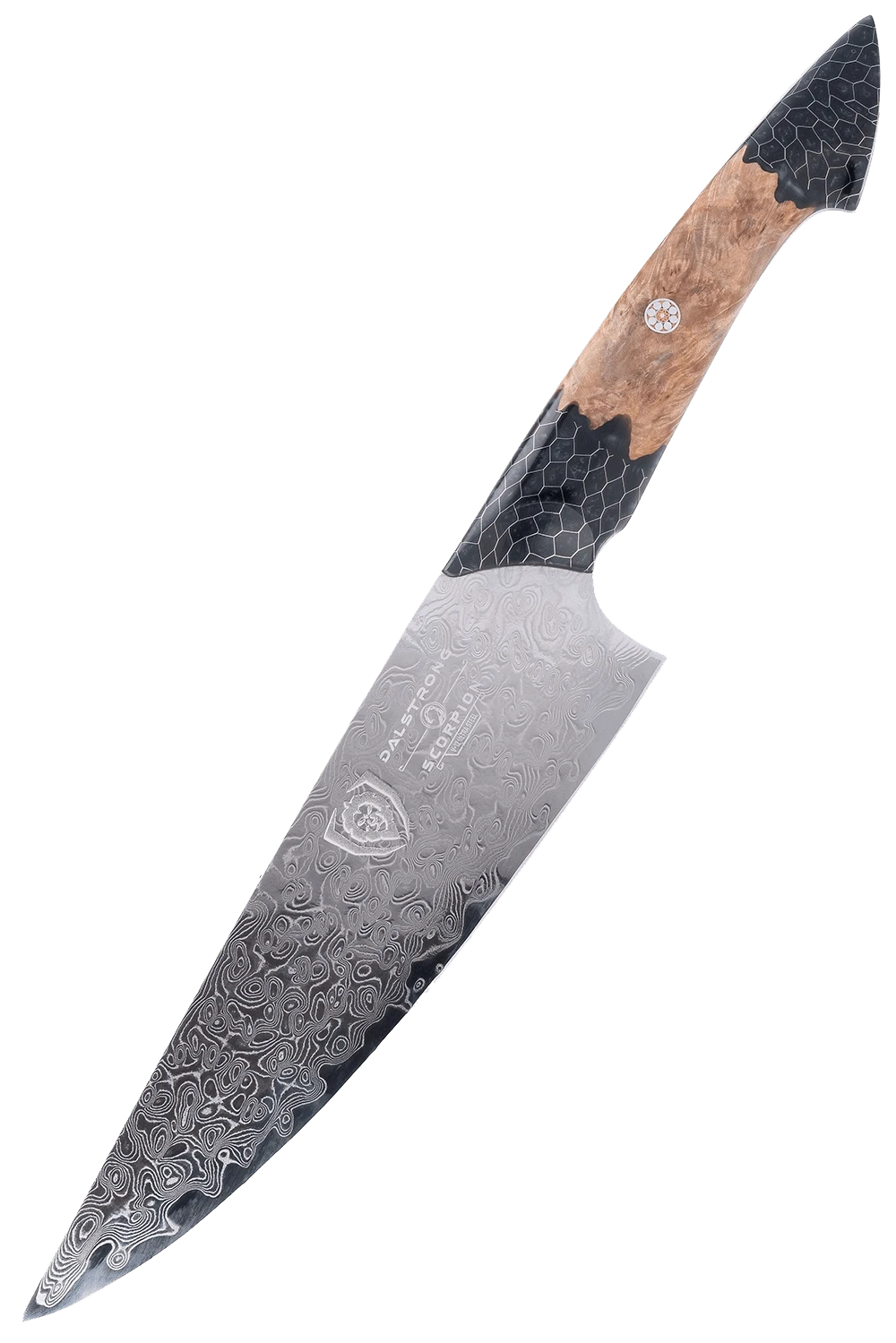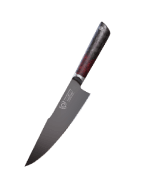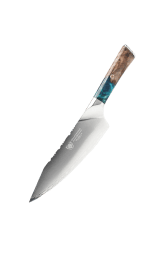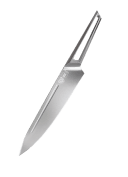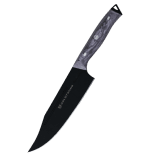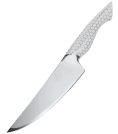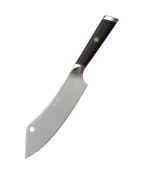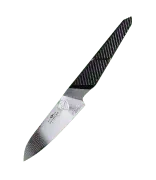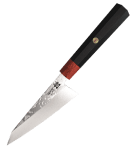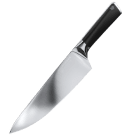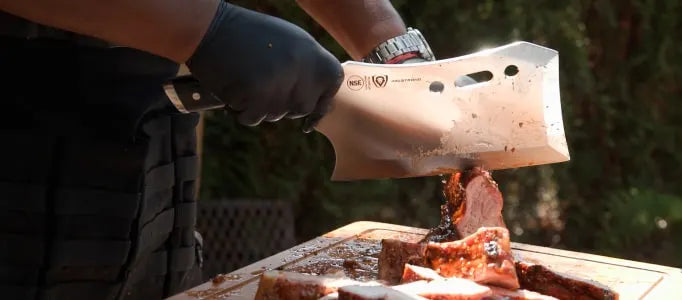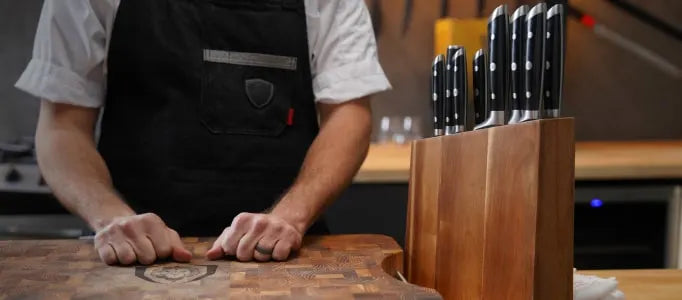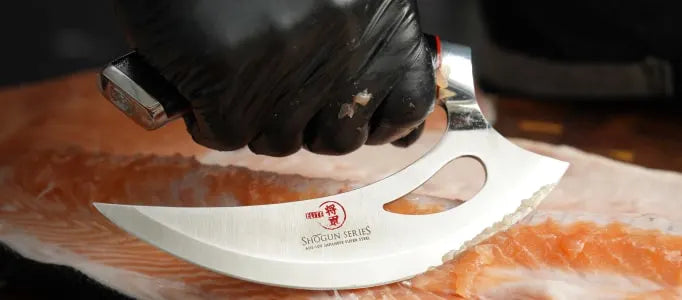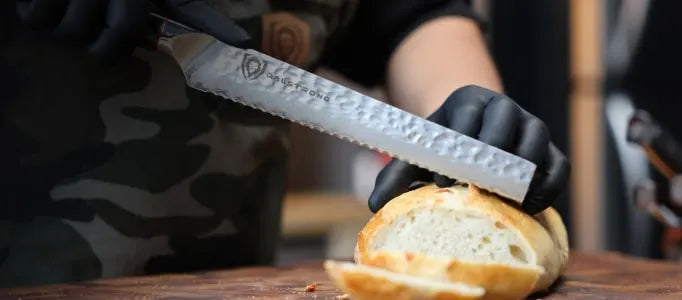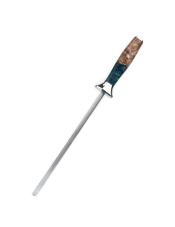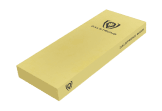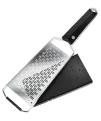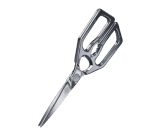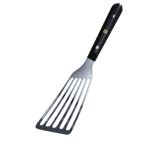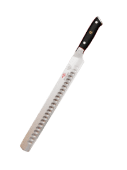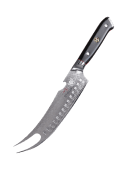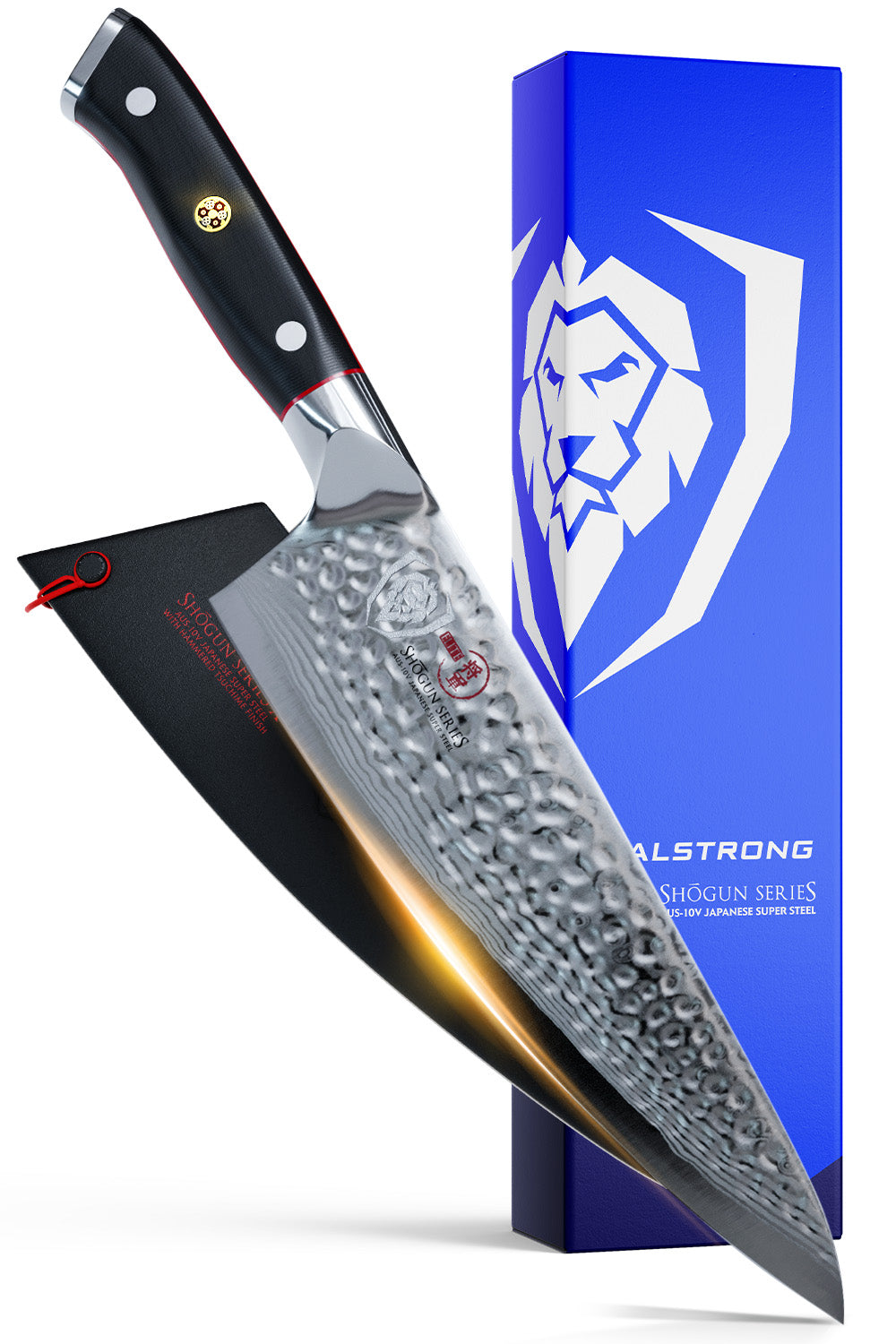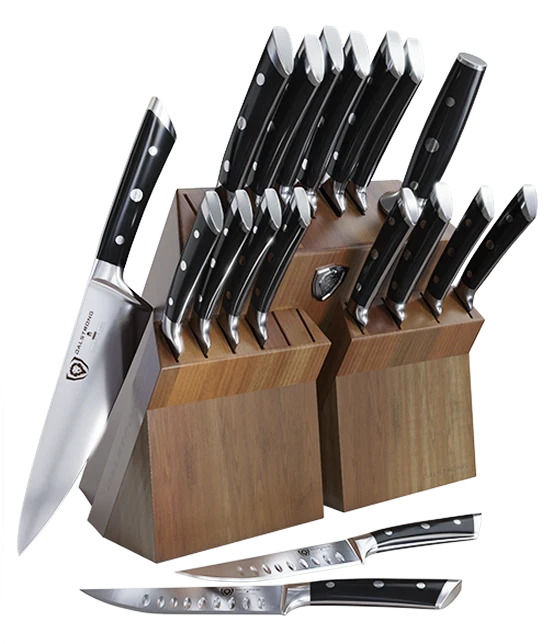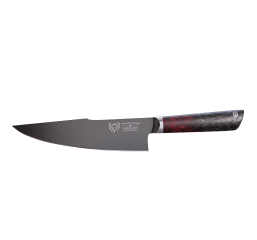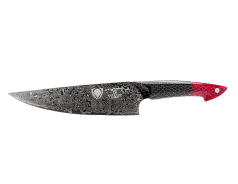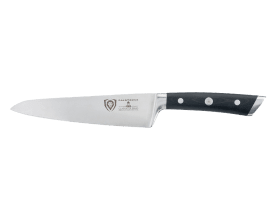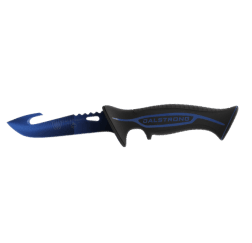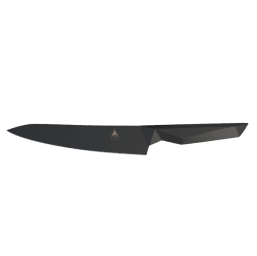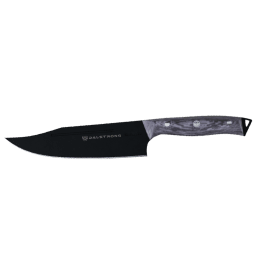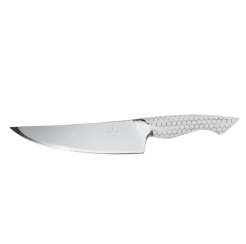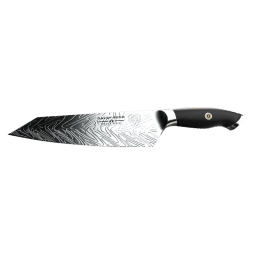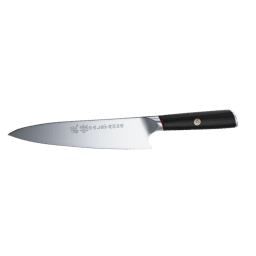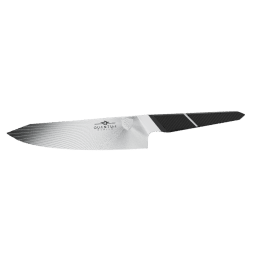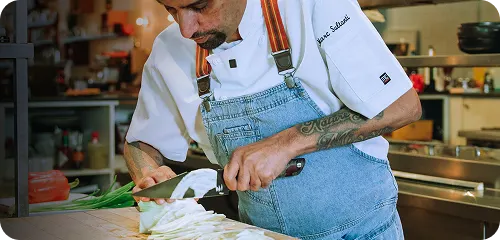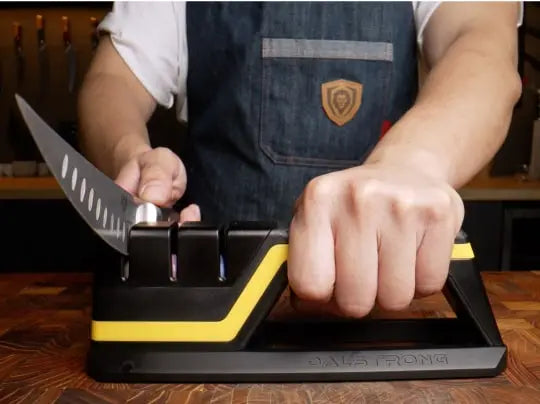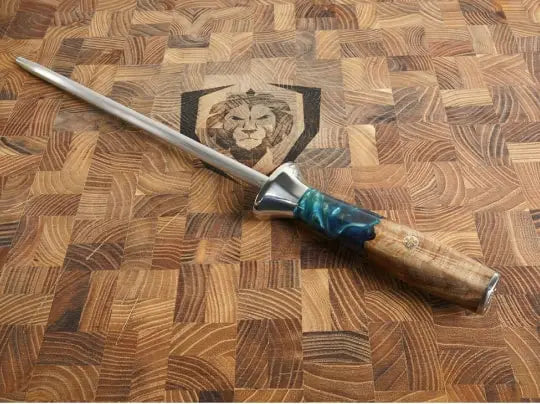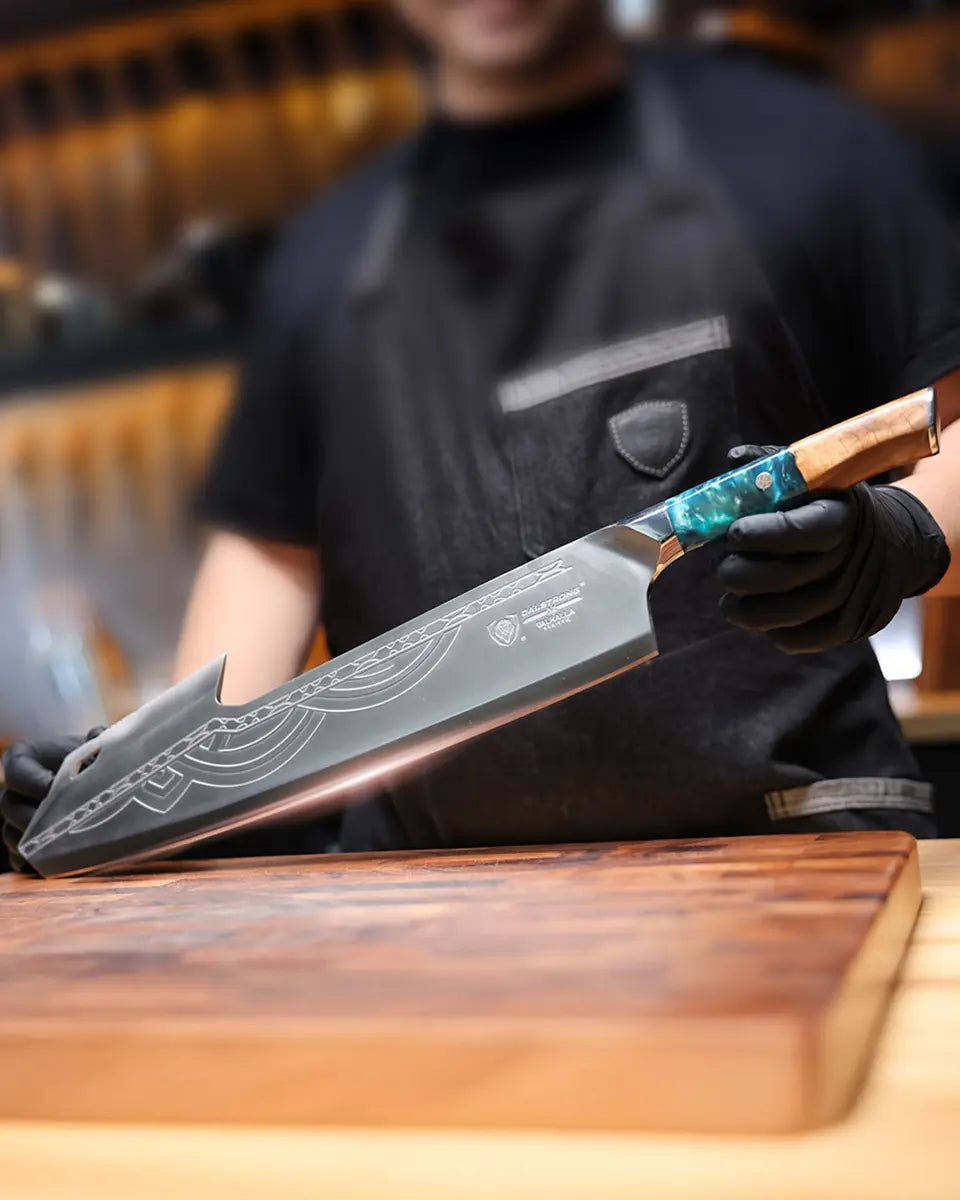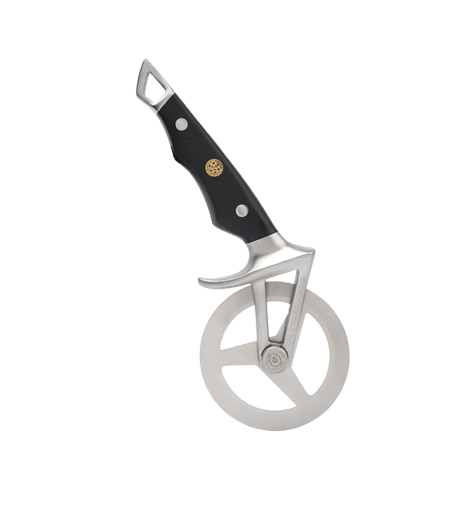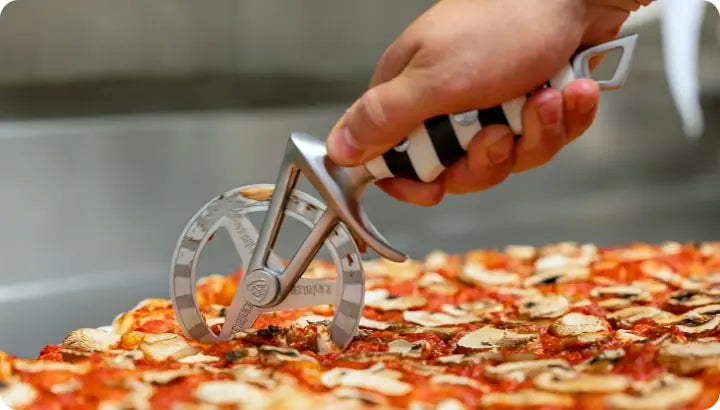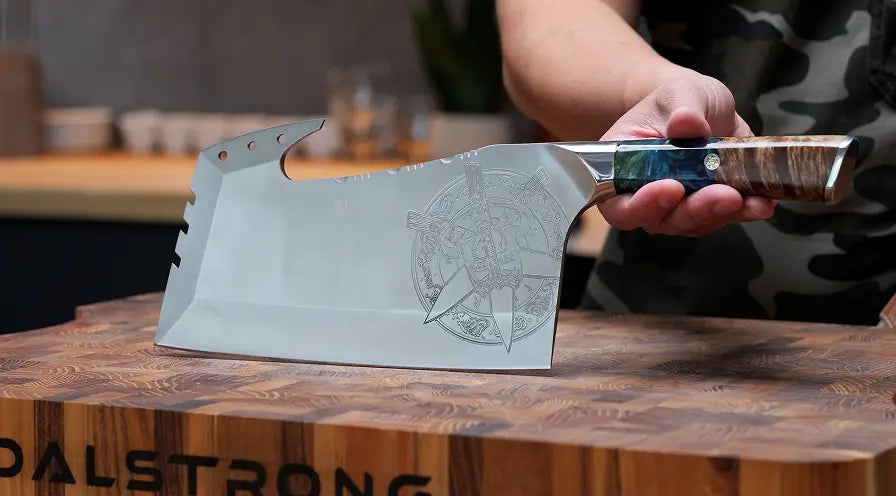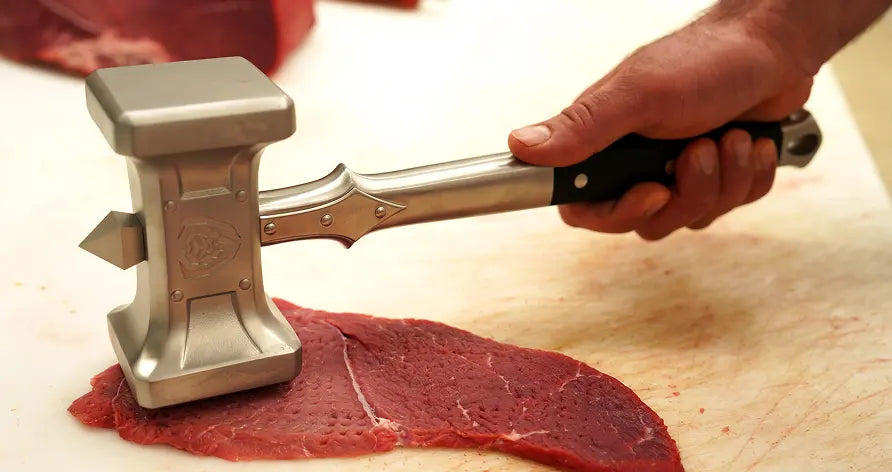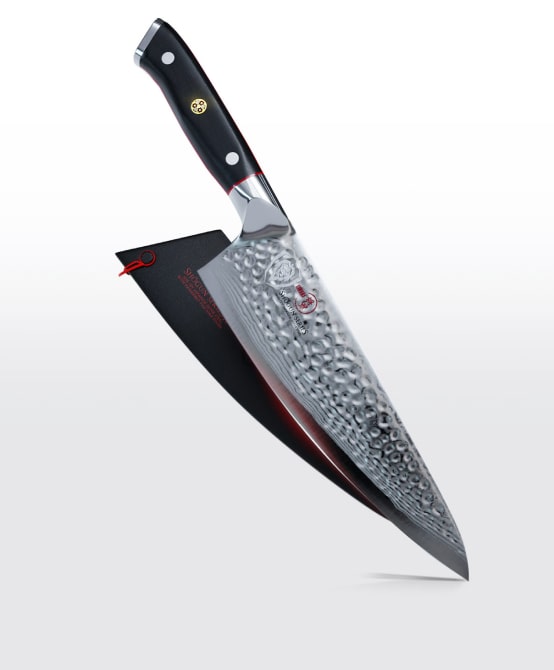 Paring Knife 4" | Omega Series | Dalstrong
Paring Knife 4" | Omega Series | Dalstrong
Quick Overview: How Do You Zest A Lemon
- Roll the lemon on a cutting board to loosen juices and wash it to remove any dirt.
- Opt for a sharp paring knife, citrus zester, or vegetable peeler.
- Hold the lemon in one hand, ensuring a firm grip for precise zesting.
- With a sharp paring knife, rotate the lemon and gently scrape the outer layer, avoiding the bitter white pith.
- Hold the lemon firmly, use a citrus zester in your dominant hand, and create fine strips by moving in one direction.
- Peel wide strips of the lemon's outer layer with a vegetable peeler.
- Take your time to avoid the bitter white pith.
- Hold the lemon securely and grate the outer layer with the fine side of a box grater.
- Use a sharp knife to create wide strips of lemon peel by rotating the lemon.
- Preserve the freshness of your zest by storing it in an airtight container,
Welcome to our citrus-infused world of culinary delights! Discover the art of zesting with a sharp paring knife or citrus zester, avoiding the bitter white pith. From lemon poppy seed muffins to refreshing salads, explore the vibrant flavor of finely grated zest. Uncover tips on using kitchen tools like box graters and channel knives for perfect citrus strips. Learn how to remove wax from lemons, store zest in airtight containers, and elevate your cooking with the essence of fresh lemon zest in every dish. Let’s dive into a zesty journey.
1. What Is Lemon Zest?
 Paring Knife 4" | Quantum 1 Series | Dalstrong
Paring Knife 4" | Quantum 1 Series | Dalstrong
Lemon zest is the outer part of a lemon peel, specifically the colorful, fragrant layer containing natural oils. To get lemon zest, you can use a sharp paring knife, citrus zester, or vegetable peeler.
Avoid the bitter white pith while zesting. Lemon zest adds a blast of citrus flavor to dishes like lemon cake, rice krispie treats, and lemon poppy seed muffins. It's essential for recipes, and you can learn how to zest lemons using a variety of kitchen tools like a box grater or a channel knife. Fresh lemon zest is a fantastic way to enhance the taste of your favorite recipes!
Read about health benefits of lemon, here.
2. How To Use Lemon Zest In Cooking And Baking
 Paring Knife 4" | Scorpion Series | Dalstrong
Paring Knife 4" | Scorpion Series | Dalstrong
From sharpening your kitchen skills with a paring knife to unveiling the secrets of using zest in diverse recipes, this guide will make you a zest expert. Let's dive into the zestful realm of cooking and baking, where every dish becomes a burst of citrus delight.
Unlocking the Citrus Treasure
Lemon zest is the hidden gem in citrus fruits, residing in the colorful outer layer of the peel. To get the moust of it, you can use a sharp paring knife, citrus zester, or even a vegetable peeler. Be careful not to include the bitter white pith while zesting, ensuring only the fragrant, flavorful zest finds its way into your dishes.
Essential Tools for Zesting
Equip your kitchen with the right tools for zestful success. A box grater and channel knife are incredible kitchen tools for finely grating and zesting lemon into citrus strips. Choose your weapon – each kitchen tool has its unique way of extracting the vibrant essence of fresh lemon zest.
Avoiding the Bitter Bite
In the quest for perfect zest, mastering the art of avoiding the white pith is crucial. A sharp paring knife and a steady hand can help you navigate the outer layer, ensuring only the zest, full of natural oils and aroma, is added to your culinary creations.
Zesting Techniques for Various Dishes
There are many ways lemon zest can make your cooking and baking more exciting! Whether it's giving salads and dressings a tangy flavor or making lemon cakes and rice krispie treats taste even better, zest can turn regular recipes into amazing dishes. You can also zest lemons for delicious instant pot recipes, lemon poppy seed muffins, and many other tasty treats.
Storage and Handling Tips
Preserve the freshness of your zest by storing it in airtight containers. Learn why it's important to take off the wax from lemons before zesting to get the real lemon taste. Follow easy tips on how to keep and handle lemons, making sure you always have zest ready for your cooking ideas.
Try out different and fun ways to zest lemons. You can use a potato peeler to make wide lemon peel strips that are great for decorating your dishes. Be like a chef and experiment with different tools to find the best way to zest that fits your cooking style.
Zesty Tips for Home Cooks
Whether you're a seasoned chef or just starting, fresh lemon zest adds a burst of natural citrus flavor to your favorite recipes. You can also finely grate, zest, chop the strips, and add it into your daily meals!
3. How Do You Zest A Lemon Step-By-Step
 Bird's Beak Tourne Paring Knife 2.75" | Gladiator Series | NSF Certified | Dalstrong
Bird's Beak Tourne Paring Knife 2.75" | Gladiator Series | NSF Certified | Dalstrong
Grab your favorite citrus tool, be it a sharp paring knife or a citrus zester, and let's dive into the world of lemon zest.
Understanding the Lemon Zest Basics
Before we delve into the step-by-step process, let's understand what lemon zest is. Zest is the outer layer of the lemon peel, filled with natural oils and a vibrant citrus aroma. It adds a refreshing kick to dishes, making them more flavorful and aromatic. Now, let's explore how to unlock this citrus treasure.
Essential Tools for Zesting
To start your zesting adventure, gather the right tools. A sharp paring knife, citrus zester, or even a vegetable peeler can be your trusty companions. Each tool offers a unique way to extract the lemon zest, so choose the one that best suits your preferences and kitchen skills.
Preparing the Lemon
Before you begin zesting, it's essential to prepare the lemon. Roll the lemon on a cutting board with gentle pressure to loosen the juices inside. This step makes zesting easier and more efficient. Once the lemon is ready, wash it thoroughly to remove any dirt or wax from the outer layer.
Zesting with a Sharp Paring Knife
If you opt for a sharp paring knife, follow these simple steps:
- Hold the lemon in one hand and the knife in the other.
- Rotate the lemon as you gently scrape the outer layer with the knife.
- Be cautious to only remove the colored part of the peel, avoiding the bitter white pith.
Zesting with a Citrus Zester
For those using a citrus zester, here's how to do it:
- Hold the lemon firmly in one hand.
- With the zester in your dominant hand, gently scrape the outer layer.
- Move the zester in one direction, creating fine strips of lemon zest.
- Rotate the lemon as needed to zest the entire outer layer.
Zesting with a Vegetable Peeler
If you prefer a vegetable peeler, follow these steps:
- Hold the lemon in one hand and the peeler in the other.
- Carefully peel off wide strips of the outer layer.
- Ensure you only peel the colored part, leaving the bitter white pith behind.
Avoiding the Bitter White Pith
One crucial aspect of zesting is avoiding the bitter white pith, as it can ruin the flavor of your dishes. Whether you're using a knife, zester, or peeler, take your time to carefully remove only the colored part of the peel. A steady hand and attention to detail will ensure that you capture the zest's natural oils without introducing bitterness.
Finely Grating Lemon Zest with a Box Grater
For those who prefer using a box grater, here's a step-by-step guide:
- Hold the lemon securely in one hand.
- Using the fine side of the grater, gently rub the lemon against it.
- Be mindful to grate only the outer layer, avoiding the bitter white pith.
Explore the world of creativity with a channel knife
- Hold the lemon in one hand.
- With the channel knife in your dominant hand, create wide strips of lemon peel.
- Rotate the lemon as needed to achieve the desired amount of zest.
Get adventurous with alternative zesting methods
- Experiment with a potato peeler to create wide strips for garnishing dishes.
- Try different kitchen tools to find the method that suits your cooking style.
- Remember to focus on capturing the zest's natural oils while avoiding the bitter pith.
Storing Lemon Zest
Preserving the freshness of your lemon zest is key to maximizing its flavor. Once you've zested, keep the zest in a tight-sealed container to keep it fresh. This way, you'll always have a stash of zest ready to jazz up your recipes with a burst of citrus whenever you feel like it!
Tips for Home Cooks
4. Dalstrong Tools You Will Need
1. Paring Knife 3.5" | Shogun Series ELITE
Unleash culinary precision with the Shogun Series 3.5” paring knife – a versatile essential for chefs and cooks. Crafted from ultra-premium Japanese AUS-10V 'super steel' with a mesmerizing Tsunami Rose pattern, this blade ensures unrivaled sharpness and edge retention. The handle not only provides super strong military-grade durability but also comfortable design for your hands. Plus, there's a cool copper mosaic pin for extra style.
The knife itself is made super tough with precise forging and special freezing treatment, making it durable, flexible, and resistant to stains.The mirror-polished bolster and zero-balance design deliver a perfect pinch grip. Elevate your kitchen experience with Dalstrong's pinnacle of craftsmanship.
PROS:
- Exceptional 62+ Rockwell hardness for enduring performance.
- The nitrogen-cooling process is a special treatment that hardens the blade on this knife.
- The Tsunami Rose pattern on the blade isn’t just visually striking, but also adds a touch of elegance to the knife.
- G-10 Garolite handle ensures a resilient, moisture-resistant grip.
CONS:
- Premium quality comes at a higher price point which might be a tad bit outside of budget for some home cooks.
- The blade length may fall a little short for some larger cutting tasks.
2. Paring Knife 3.5" | Frost Fire Series
Meet the Frost Fire 3.5” paring knife, a kitchen essential for precision cuts. Perfect for coring, mincing, and peeling, this razor-sharp gem from the Frost Fire Series is not just visually stunning with its icy aesthetics but also delivers fiery performance in the kitchen. Crafted with 7-layer high-carbon 10CR15MOV steel, cobalt, and expert heat-treatment, the knife offers a precision sandblast finish.
The handle is enclosed in aluminum mesh, ensures a tension-free grip. Feel the perfect blend of comfort and elegance as this knife delivers sharpness at a precise 16-18° degree angle per side, ensuring lasting performance in your kitchen endeavors.
PROS:
- Unique "frosted" look enhances non-stick properties.
- Ergonomic white resin handle for a tension-free grip.
- Lightweight construction ensures agility and comfort.
- Tapered bolster provides a perfect 'zero-balance' balance.
CONS:
- The knife has a higher Rockwell hardness which is best suited for knives that are used by professional cooks and seasoned chefs.
- The distinctive design may not suit traditional kitchen aesthetics.
3. Swivel Straight Peeler | 3 Blades Case
Elevate your kitchen prep with the Dalstrong Swivel Peeler, an essential tool designed for every chef. Beyond peeling vegetables, this versatile peeler effortlessly creates vegetable ribbons, shaves cheese, zests citrus, carves chocolate curls, and more. The suspended, swivel-peeler blade self-adjusts for easy maneuvering around tight spaces. With three Japanese stainless steel blades (fine, serrated, and julienne), this peeler ensures precision and comfort in every kitchen task.
PROS:
- Swivel-peeler design adapts to different food surfaces for better agility.
- Simple locking system for easy blade changes and cleaning.
- Ultra-durable G10 Garolite handle provides a secure grip in wet conditions.
CONS:
- The wider handle may feel bulky for users with smaller hands.
Introducing the Dalstrong Y Peeler, a kitchen essential that transcends the ordinary. Beyond vegetable peeling, this versatile tool creates ribbons, shaves cheese, zests citrus, and more.
The Y-design is perfect for both left and right-handed cooks. It also features a simple locking system for easy blade changes, this peeler ensures precision and comfort in every kitchen task. The ultra-durable G10 Garolite handle provides a secure grip in wet conditions, making kitchen prep a confident and comfortable experience.
PROS:
- Three Japanese stainless steel blades for versatile tasks.
- Y-design accommodates both left and right-handed cooks.
- The suspended, swivel-peeler blade adapts to food surfaces for effortless maneuvering around tight spaces.
- Comes with three Japanese stainless steel blades (fine, serrated, and julienne).
CONS:
- The wider handle may feel bulky for users with smaller hands.
5. Professional Zester Narrow Grater
Transform your culinary creations with the Dalstrong Zester Grater, your secret ingredient for elevated flavors. Crafted from 304 stainless steel, it effortlessly grates citrus peels, chocolate, spices, and more, adding depth to every dish. The anti-slip, textured G10 handle and curved feet ensure ergonomic support, making it easy to use on any surface. The slim profile allows for convenient storage, and the sheathed design keeps it protected and safe.
PROS:
- 304 stainless steel blade and frame resist corrosive acids and elements.
- Anti-slip, textured G10 handle provides ergonomic support.
- Slim profile for easy storage and space-saving.
- Dishwasher safe for convenient cleaning.
CONS:
- The slim design may feel less substantial for users who prefer a heavier feel.
5. Frequently Asked Questions
How do you make lemon zest without a zester?
To make lemon zest without a zester, use a sharp paring knife or box grater to carefully remove the outer layer of the lemon peel, avoiding the bitter white pith, and finely chop the strips.
What does it mean to zest a lemon?
Zesting a lemon means extracting the outer layer of the peel, rich in natural oils and aroma, using a zester or alternative tools like a knife or grater for culinary enhancement.
Is lemon peel same as lemon zest?
Lemon peel refers to the entire outer layer of the fruit, while lemon zest specifically denotes the grated or finely chopped outer portion, prized for its concentrated citrus flavor.
Can you use a grater to zest a lemon?
Yes, you can use a grater to zest a lemon by gently rubbing the lemon against the fine side of the grater, capturing the fragrant zest while avoiding the bitter white pith.



